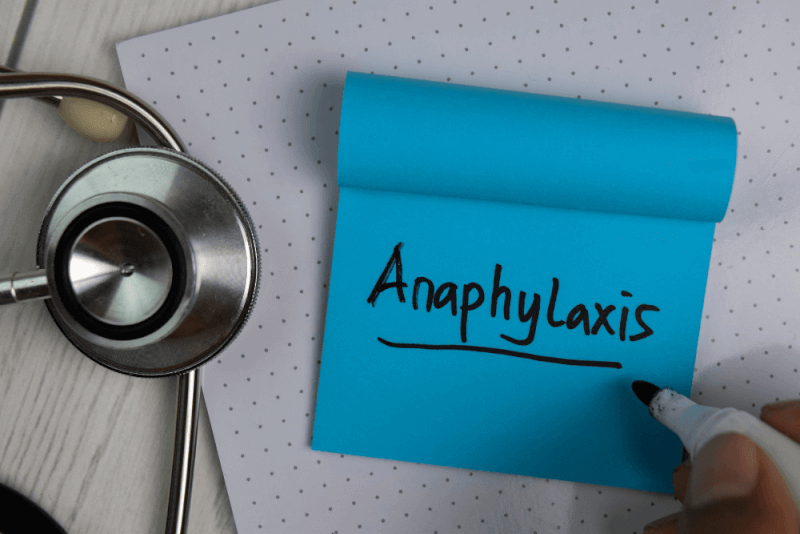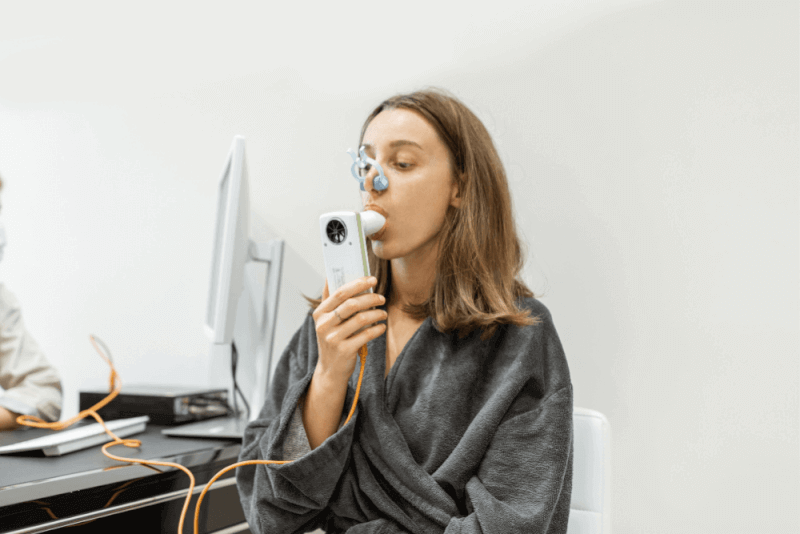30 Second Summary
- Anaphylaxis is a severe allergic reaction in which the immune system overreacts.
- Bee stings can occur due to various factors, such as food allergies and drug allergies.
- Symptoms include shortness of breath, wheezing, chest pain, cough, swelling of the tongue and throat, nausea, vomiting, diarrhea, abdominal pain and fainting.
- It is a medical emergency that requires immediate medical attention.
- To prevent anaphylaxis, it is important that people with allergies stay away from allergens and always carry an epinephrine auto-injector.
What is Anaphylaxis?
People with severe allergies may experience anaphylaxis if they encounter the allergen. Anaphylaxis, which can be life-threatening, is a serious allergic condition that occurs after ingestion of food, poison or medication. The resulting emergency is a life-threatening situation as it tends to progress rapidly. This is because it can trigger the respiratory tract.
When anaphylaxis occurs, the immune system releases a number of chemicals. Because of these chemicals released, people can go into a state of shock. Symptoms seen in people in shock are a sudden drop in pulse rate and narrowing of the airways. People start to experience breathing difficulties due to narrowing of the airways. On the other hand, people in shock may also experience symptoms such as a fast but weak heartbeat, vomiting and nausea.
Symptoms of Anaphylaxis
Since anaphylaxis, which is the body's response to a substance, occurs within minutes, symptoms appear in a very short time. In some people, the body's response to allergen exposure can occur within seconds. The symptoms are caused by the immune system releasing many chemicals into the circulatory system after contact with the allergen and the chain reactions caused by these chemicals. The symptoms seen in anaphylaxis are early symptoms and include the following.
- Dizziness,
- Tongue entanglement when speaking,
- Itching
- Difficulty swallowing,
- Abdominal pain
- Diarrhea
- Nausea
- Vomiting
- Cough
- Shortness of breath
- A feeling of tightness or discomfort in the chest area,
If these initial symptoms are not treated immediately, anaphylaxis progresses. Therefore, other symptoms also occur. Serious symptoms of anaphylaxis that occur if left untreated include
- Loss of function of the respiratory system,
- Cardiac arrest,
- Sudden edema formation in various parts of the body, especially in the face and eye area,
- Obstruction in the respiratory tract,
- wheezing
- Pulse rate acceleration,
- Irregular heart rhythm,
- Loss of consciousness
- Fatigue
- Low blood pressure,
Anaphylaxis shows different symptoms depending on the region where it occurs. For this reason, other symptoms that may be seen in patients are as follows:
- Hives,
- Tingling
- Hot flashes
- Redness on the face,
- Itching of the lips, small tongue, tongue and lips,
- Itching of the soft palate,
- Itching in the genital area,
- Itching under the feet and palms,
- Runny nose
- Nasal congestion
- Metallic taste in the mouth,
- Uterine contraction
- Urinary incontinence
- Headache
- Blurred vision
- Changes in consciousness,
- Hallucinations
- Laryngeal edema
Causes of Anaphylaxis
There are many substances that can cause anaphylaxis. Some patients may experience anaphylaxis when they encounter a substance to which they are allergic, while others may experience anaphylaxis due to the body's response at that moment even though they are not allergic. However, the cause of some anaphylaxis is not understood. This condition is called idiopathic anaphylaxis. The substances that most commonly cause anaphylaxis are.
- Bee,
- Insect stings
- Peanut
- Penicillin
- Nuts
- Milk,
- Egg,
- Shellfish,
- Latex
In rare cases, some cases of anaphylaxis can be caused by excessive running or excessive aerobic activity. Another cause of anaphylaxis is predisposition. People who have had anaphylaxis once in their life are more susceptible and are more likely to have a recurrence. Another cause of anaphylaxis is an increase in white blood cells. These people are also more likely to have anaphylaxis.
How is Anaphylaxis Diagnosed?
The diagnosis of anaphylaxis is based on clinical findings. Therefore, there is no need for any laboratory work. Patients presenting to the emergency department with anaphylaxis occurring within the first hour after contact with the allergen should be treated urgently. This includes an urgent physical examination.
The first stage of the physical examination is to look for signs of wheezing in patients. Since wheezing is caused by blistering of the lungs, respiratory protection is a priority. It is also necessary to take the patient's history. Once patients have received appropriate treatment, they can proceed to testing.
The first test after treatment is a blood test to determine the enzyme tryptase. This enzyme remains elevated for 3 hours after anaphylaxis and confirms anaphylaxis. Patients can also undergo allergy tests to identify the cause of anaphylaxis.
In some patients, anaphylaxis may recur a few hours after treatment. This is the biphasic reaction It is called. In some patients, the clinical picture may last for several days and this is called prolonged anaphylaxis.
Treatment of Anaphylaxis
Since anaphylaxis progresses rapidly to anaphylactic shock, immediate intervention is essential. The first stage of treatment is to protect the airways. Fluid supplementation should also be started immediately. The causative agent of anaphylaxis must then be identified. Because it is necessary to make sure that contact is not still ongoing.
The main treatment for anaphylaxis is epinephrine injection. When administered to young patients, doses are adjusted according to their weight. Intramuscular administration of epinephrine acts more rapidly than subcutaneous administration. Patients usually show improvement after a single dose of epinephrine. However, in some patients, epinephrine administration may need to be continued at 5-10 minute intervals.











